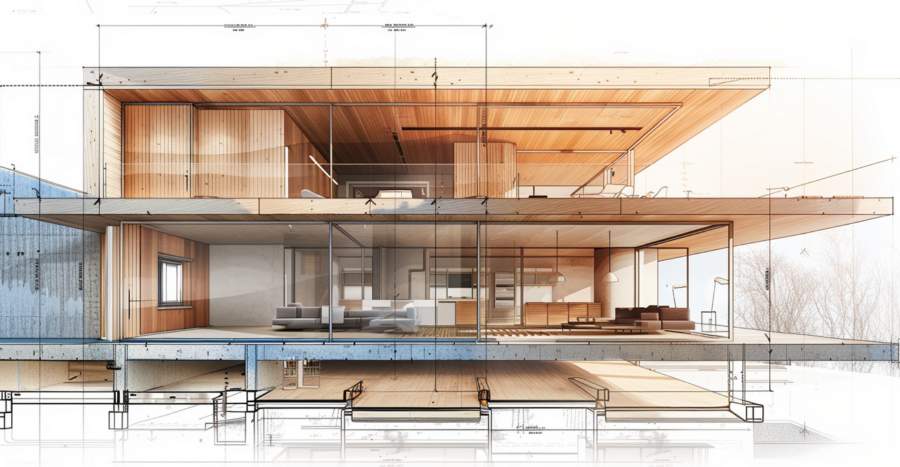Why Moisture Loves Flat Roofs (Too Much)
Flat roofs are the brooding poets of architecture: dramatic, misunderstood, and always one emotional rainstorm away from collapsing into chaos. Unlike sloped designs that naturally shed water, flat commercial roofs tend to accumulate moisture—especially when drainage systems clog or are undersized. Even in the absence of direct leaks, poor insulation can lead to temperature differences that cause condensation to form beneath the roof deck.That condensation doesn’t just evaporate and move on with its life. It lingers, seeps into insulation, and creates a damp paradise for mold spores. If your building has a poorly insulated roof deck or inconsistent vapor control, moisture will infiltrate like a passive-aggressive tenant who never plans to leave.
The Real Role of Insulation (Spoiler: It’s Not Just About Heat)
People often think of insulation as a thermal blanket. And yes, it keeps hot air in during winter and out during summer. But insulation’s lesser-known skill is in managing moisture flow. In commercial buildings, especially those with flat roofs, it acts as a buffer—minimizing the temperature swings that create condensation on interior surfaces.High-quality, properly installed insulation helps maintain surface temperatures above the dew point. That means less condensation, less soggy insulation, and far fewer opportunities for mold colonies to stage a coup. The right materials—polyisocyanurate boards, spray foam, or closed-cell solutions—can seal off vulnerable gaps and resist moisture intrusion.
Don’t Skip the Vapor Barrier
Installing insulation without a vapor barrier is like building a dam out of cheesecloth. Vapor barriers (or vapor retarders) are thin layers—usually plastic or foil-faced—that go on the warm side of the insulation. Their mission: block water vapor from entering and condensing within the insulation.In commercial roofs, especially in humid regions or buildings with high interior moisture (think gyms, kitchens, or industrial facilities), vapor barriers are non-negotiable. The trick is knowing where to place them—because the wrong side of the insulation is almost as bad as no barrier at all. Placement depends on your local climate and building use, and miscalculations can turn a well-meaning renovation into a moldy horror story.
Ventilation Isn’t Just for Attics Anymore
Ventilation used to be the exclusive domain of sloped residential attics, where old fans whir away in solitude. But commercial flat roofs need breathing room too—especially when the roof assembly includes layers of insulation that might trap moisture without it.A properly ventilated roof allows any moisture that sneaks in to escape before it settles down with a moldy mortgage. In some systems, vented cavities are added between insulation layers. In others, the entire roof assembly is designed as a “cold roof” to promote air circulation beneath the membrane. It’s less about giving your roof a vacation breeze and more about avoiding a fungal uprising in the ceiling tiles.
Periodic Inspections: Your Roof’s Wellness Check
A commercial roof doesn’t send passive-aggressive emails when it’s unhappy. It just starts to rot. That’s why regular inspections—especially before and after rainy seasons—are critical. Insulation’s moisture resistance depends heavily on its condition, and even the best materials can degrade if exposed to prolonged wetting.Look for signs of ponding water, discolored ceiling tiles, musty smells, or suspiciously motivated mushrooms growing from unexpected places. If your inspection reveals damp insulation, take action. Wet insulation not only loses thermal performance—it becomes a breeding ground for mold and can compromise the roof’s structural integrity over time.
- Schedule inspections at least twice a year (spring and fall are prime).
- Use infrared scanning to detect hidden moisture.
- Document and compare readings over time to spot slow leaks.
Choosing the Right Insulation System
Not all insulation is created equal, especially in commercial environments. Selecting the right material and installation method means weighing thermal resistance, moisture tolerance, compressive strength, and compatibility with your roof system.Spray foam offers excellent sealing and R-value, but it must be expertly applied to avoid gaps. Rigid foam boards (like polyiso or XPS) are common in commercial roofs, but their effectiveness depends on a tight fit and proper layering. And if your contractor mentions “open-cell spray foam” on a flat roof, you have full permission to look mildly alarmed.
Also: don’t skimp on installation. Even premium insulation fails spectacularly when installed like it was someone’s side project between lunch and quitting time.
Spores and Regret
Mold isn’t dramatic. It doesn’t make loud noises, doesn’t flood the floors, and won’t throw sparks. It just grows—quietly, steadily, and often undetected until your maintenance crew stumbles upon a ceiling panel that peels back like wet lasagna. By then, you’re looking at not just remediation costs but also potential health issues and legal headaches.The cost of proper insulation and moisture management is far less than the chaos mold can bring to a commercial building. A roof that’s well-insulated, correctly ventilated, and regularly inspected is less likely to harbor moisture, and far less likely to transform into a damp biosphere with attitude.
Moldy with a Chance of Litigation
Preventing moisture isn’t sexy. It doesn’t get standing ovations or holiday cards. But for commercial buildings, especially those with flat roofs or confined attic spaces, it’s a cornerstone of longevity and liability prevention. Mold doesn’t just ruin insulation—it ruins reputations, tenant relationships, and sometimes entire structural systems.So yes, insulation matters. Not just for comfort, not just for savings—but as your first line of defense against things that grow where they shouldn’t. If your building’s insulation strategy hasn’t been reviewed in years, maybe it’s time to peek above the ceiling tiles and ask a few uncomfortable questions.
The good news? Once you’ve got the right layers in place, a sound vapor strategy, and a seasonal inspection routine, you can finally stop wondering if your building is slowly fermenting from the top down.
Article kindly provided by Insulation Commandos

